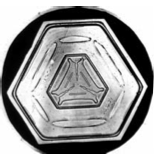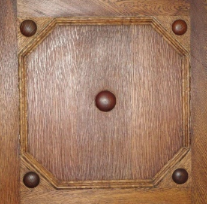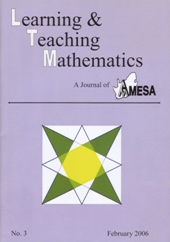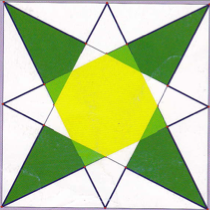



"Man muss immer generalisieren." (One should always generalize). - Karl Jacobi (1804-1851). In P. Davis and R. Hersh, 1981, The Mathematical Experience, Boston: Birkhauser, p. 134.
"Proper understanding is, finally, a grasping of relations (un saisir de rapports). But we understand a relation more distinctly and more purely when we recognize it as the same in widely different cases and between completely heterogeneous objects." - Arthur Schopenhauer quoted by George Polya (1954) in Induction and Analogy in Mathematics, Princeton University press, Vol 1. p. 30.
Generalization is often a valuable process in mathematics as it increases our understanding of a topic by identifying its essential features and looking at it from a higher vantage point. So for example, looking at the solution of algebraic equations from the perspective of abstract algebra of groups and rings shows us why quintic polynomials do not have algebraic solutions, and a comparison of a simple concept such as 'straight line" in the Euclidean plane with the equivalent concept on other surfaces, deepens our understanding of 'straightness'. Concepts in two- and three-dimensional space, and the theorem of Pythagoras in its definition of distance as a metric, take on a different meaning when we generalize to multi-dimensional space. The same is true if we generalize triangles and quadrilaterals to other polygons.
(For better viewing, please resize your browser window so that the two sketches further down fit in alongside each other).
Dynamic Illustrations: The two dynamic sketches below, which can be manipulated by dragging the red vertices, shows examples of semi-regular angle-gons (equi-angular cyclic 2n-gons) and semi-regular side-gons (equilateral circumscribed 2n-gons). They respectively generalize the concepts of a rectangle and a rhombus and may respectively be defined as follows (see De Villiers, 2011).
| Semi-regular angle-gon (equi-angular cyclic 2n-gon) | Semi-regular side-gon (equilateral circumscribed 2n-gon) |
| A semi-regular angle-gon is any 2n-gon with an axis of symmetry through each pair of opposite sides. | A semi-regular side-gon is any 2n-gon with an axis of symmetry through each pair of opposite angles (vertices). |
Semi-regular Angle-gons: A generalization of a rectangle ........................... Semi-regular Side-gons: A generalization of a rhombus
(Note that k represents the total turning one would undergo walking around the perimeter of each figure, and is measured by the number of full revolutions undergone).
Some Properties: Semi-regular angle-gons and semi-regular side-gons have rotational symmetry of order n and also display an interesting side-angle duality as shown in the table of properties below.
| Semi-regular angle-gon | Semi-regular side-gon |
| All angles equal. | All sides equal. |
| Alternate sides equal. | Alternate angles equal. |
| Circumscribed circle (cyclic). | Inscribed circle (circumscribed). |
| n axes of symmetry through opposite sides. | n axes of symmetry through opposite angles (vertices). |
| Main diagonals AiAi+n are equal in length. | Main diagonals AiAi+n intersect at equal angles. |
| Opposite sides equal if n is even. | Opposite angles equal if n is even. |
Appearance & Application: Perhaps not surprisingly, due to their symmetry, these polygons sometimes appear in nature as well as in various artistic designs. Below is a snowflake in the shape of a semi-regular angle-gon with n = 3 as well as a design with a semi-regular angle-gon with n = 4 and k = 1 seen on a cupboard in the KZN Midlands in 2011. The cover of the February 2006 issue of the Learning & Teaching Mathematics journal had a crossed (star) semi-regular side-gon with n = 4 and k = 2 as shown below by the 3rd figure, and enlarged in the 4th figure. Also note that the yellow convex octagon formed in the interior of the 4th figure is in turn an example of a semi-regular sidegon with n = 4 and k = 1. Of interest too is that the Gielis Super Shape Formula can also produce some of these polygons.




Various subsets and combinations of the properties of these polygons provide interesting little results and problems. For example, one of the properties of an equilateral circumscribed hexagon (semi-regular side-gon with n = 3) was used for Question 11 in the 2010 South African Mathematics Olympiad Round 2. (Also see 2010 SAMO Solutions 2).
Further Generalization: Semi-regular angle-gons and semi-regular side-gons can be further generalized respectively to Alternate sides cyclic 2n-gons and Alternate angles circum 2n-gons, which are respective generalizations of Isosceles Trapezia and Kites. In 2021 Jay Jahangiri, Ruti Segal & Moshe Stupel generalized semi-regular angle-gons and semi-regular side-gons further by exploring the Angle-side properties of polygons inscribable in an ellipse.
Investigate Further: Which of these polygons can tessellate with other tiles? For a couple of examples go to Some 2-tile tessellations with semi-regular angle-gons and Some 2-tile tessellations with semi-regular side-gons.
References
De Villiers, M. (2011). Equi-angled cyclic and equilateral circumscribed polygons. The Mathematical Gazette, 95(532), pp. 102-106.
De Villiers, M. (2011). Feedback: Equi-angular cyclic and equilateral circumscribed polygons. The Mathematical Gazette, 95(533), p. 361.
De Villiers, M. (2012). LTM Cover Diagram, February 2006: A semi-regular side-gon. Learning & Teaching Mathematics, no. 12 (June), pp. 34-35.
Jahangiri, J.; Segal, R. & Stupel, M. (2021). Angle-side properties of polygons inscribable in an ellipse. IJMEST, DOI: 10.1080/0020739X.2021.1919769.
Related Links
Alternate sides cyclic-2n-gons and Alternate angles circum-2n-gons - generalizations of isosceles trapezia and kites
Logical Discovery: Circum Quad (Tangential quadrilateral) (Rethinking Proof Activity for Pitot's theorem)
Circumscribed (Tangential) Hexagon Alternate Sides Theorem
The Tangential (or Circumscribed) Polygon Side Sum theorem
Japanese theorem for cyclic quadrilaterals
Cyclic Quadrilateral Angle Bisectors Rectangle Result
A Rectangle Angle Trisection Result
A Rhombus Angle Trisection Result
A diagonal property of a Rhombus constructed from a Rectangle
Golden Quadrilaterals - Generalizing the concept of a golden rectangle
Concurrent Angle Bisectors of a Quadrilateral
The Equi-inclined Lines to the Angle Bisectors of a Tangential (Circumscribed) Quadrilateral
Pitot's Theorem for a tangential/circumscribed quadrilateral
International Mathematical Talent Search (IMTS) Problem Generalized
An Inclusive, Hierarchical Classification of Quadrilaterals
Some External Links
Rhombus (Wikipedia)
Rectangle-rhombus duality (Wikipedia)
Cyclic quadrilateral (Wikipedia)
Tangential quadrilateral (Wikipedia)
SA Mathematics Olympiad Questions and worked solutions for past South African Mathematics Olympiad papers as well as books on problem solving can be found at this link.
(Note, however, that prospective users will need to register and log in to be able to view past papers and solutions.)
********************************
Back to "Dynamic Geometry Sketches"
Back to "Student Explorations"
Michael de Villiers, created 2011, updated to WebSketchpad13 July 2018; 15 July & 5 October 2023; 12 May 2025.